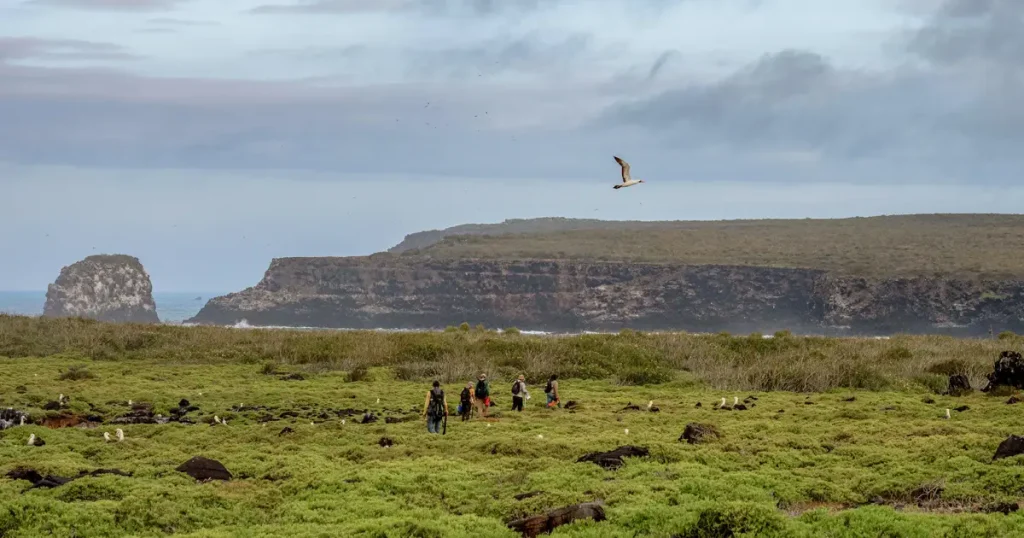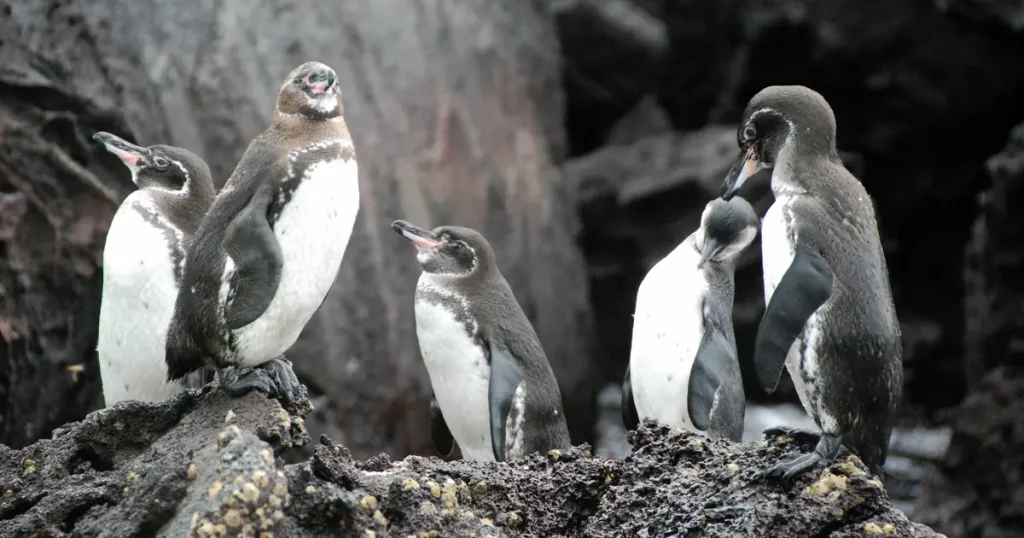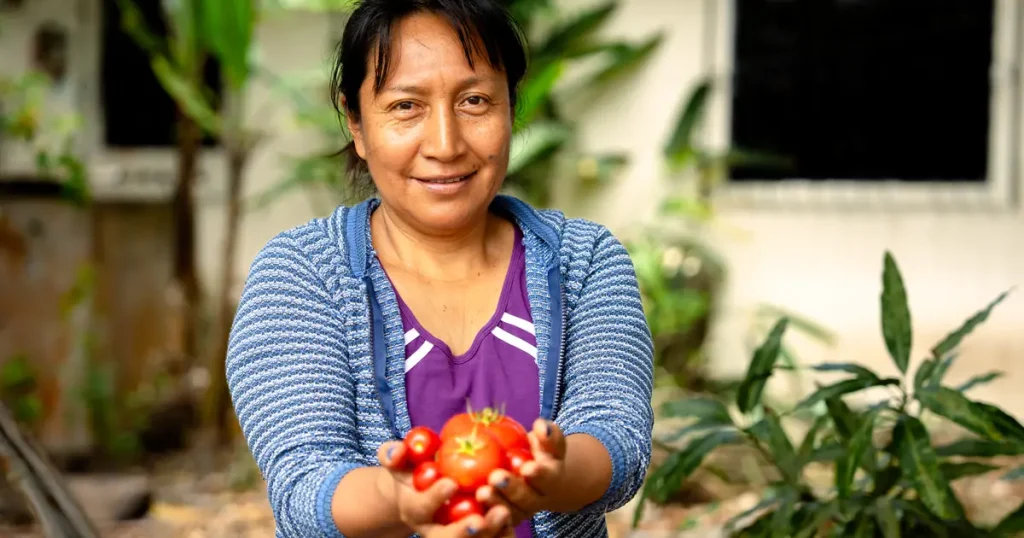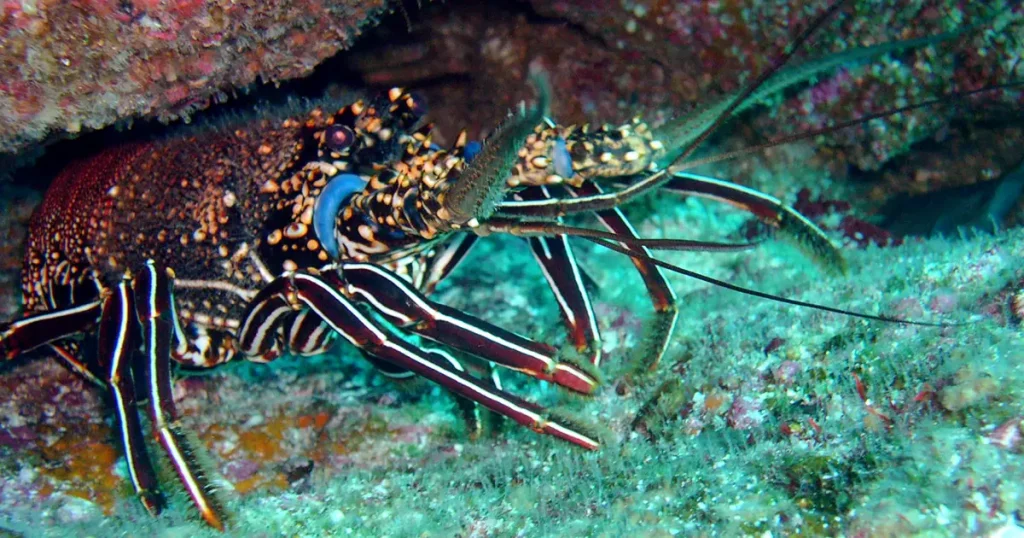Discover the World’s Only Non-Flying Cormorant Species
Date: 4/21/2023
//Versión en español abajo.//
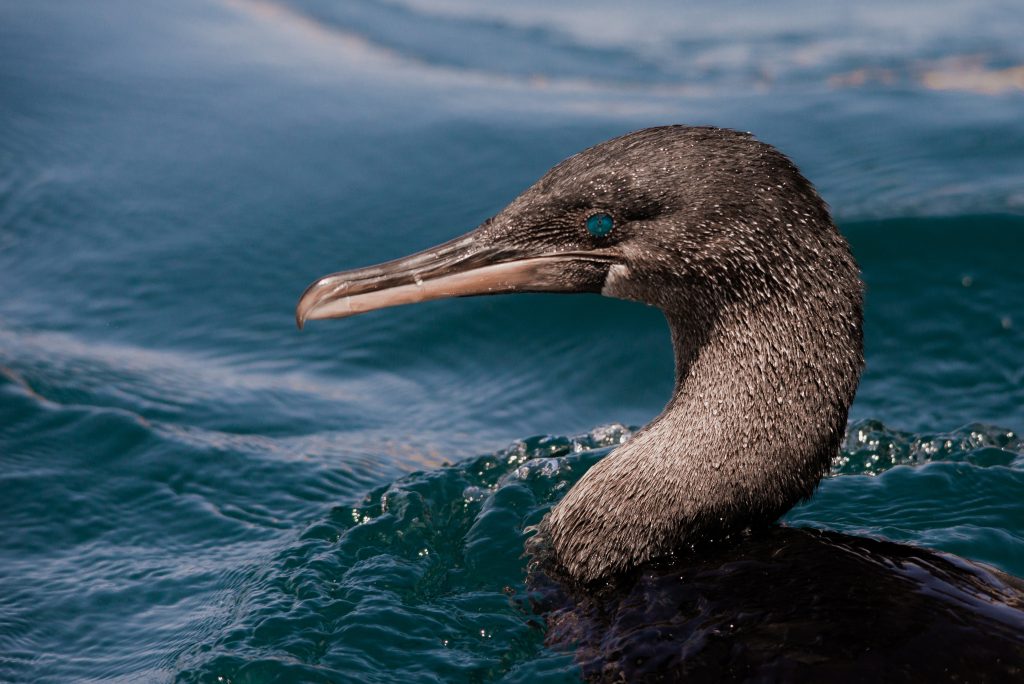
Seabirds are vital indicators of the health of our oceans and the availability of marine resources. Understanding the status of bird populations and their feeding and migratory habits provides valuable information about the state of ecosystems and how they change over time.
The legendary Flightless Cormorant (Phalacrocorax harrisi) is one such seabird bioindicator that is also an iconic species of the Galápagos Islands. This endemic species only inhabits the shores of Fernandina and Isabela Islands and is the only non-flying cormorant species in the world.
The Flightless Cormorant gets its name from its atrophied wings, which make it unable to fly. This characteristic is the result of the species’ adaptation to the conditions of Galápagos, where the absence of terrestrial predators two million years ago allowed the species to have readily available food without having to fly great distances. Its diet mainly consists of fish from the coastal waters, octopuses, squid, and eels. Even more than their flying counterparts, Flightless Cormorants are excellent swimmers, and these social birds are often seen resting on large rocks near the coast after foraging for food in the sea.
Breeding season for the Flightless Cormorant usually takes place during the Archipelago’s coldest months, between July and October, when marine food is more abundant. The female usually lays three eggs per clutch, but only one chick typically survives. Both the male and female participate in incubating the eggs and continue to share the responsibilities of feeding and protecting the chicks. Once the chicks become more independent, the female leaves to find another mate, leaving the male to fulfill the rest of the chicks’ care. Females can reproduce up to three times per year.
According to the latest count by the Galápagos National Park Directorate in 2022, there is an approximate population of 2,085 individuals, with the species classified as Vulnerable on the IUCN Red List. The Flightless Cormorant faces threats from predators such as snakes, owls, hawks, and introduced rats and cats, and it can also be preyed upon by sharks. Despite these threats, experts say they have a life expectancy of up to 50 years.
At Galápagos Conservancy, we recognize the need to protect the survival of seabirds, including the iconic Flightless Cormorant of Galápagos. This species, like other seabirds, performs vital ecological functions in the ecosystems of Galápagos. Dedicated efforts to combat invasive species, illegal fishing, and other threats to the Flightless Cormorant will ensure the seabirds live on the shores of Fernandina and Isabela for generations to come.
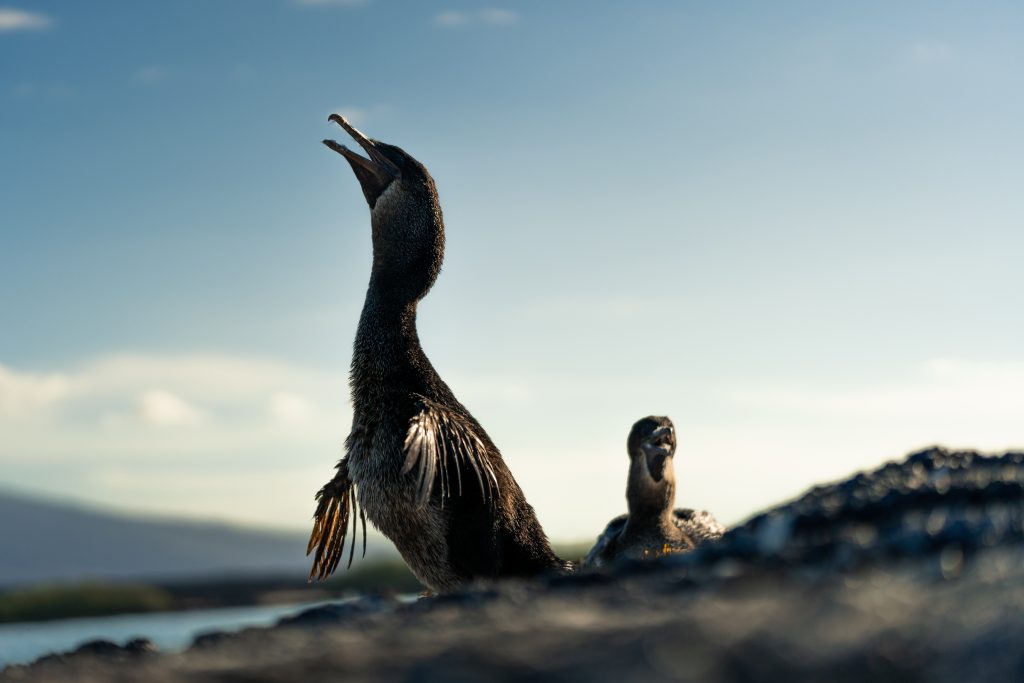
La única especie de cormorán no volador del mundo es endémica de Galápagos
Las aves marinas son importantes bioindicadoras de la salud de los océanos y la disponibilidad de sus recursos. Conocer el estado de las poblaciones de las aves, sus hábitos migratorios y alimenticios proporcionan información clave del estado de los ecosistemas y sus cambios a lo largo del tiempo.
Una de estas aves marinas bioindicadoras, y a la vez icónicas de las islas Galápagos, es el legendario cormorán no volador (Phalacrocorax harrisi), una especie endémica del Archipiélago que habita únicamente en las orillas de las islas Fernandina e Isabela.
El cormorán no volador debe su nombre a sus alas atrofiadas, lo que lo hace incapaz de volar. Esta característica es el resultado de la adaptación de la especie a las condiciones de Galápagos, donde la ausencia de depredadores terrestres en su momento permitió a la especie disponer de alimento con mucha facilidad sin tener que volar grandes distancias. Se alimenta principalmente de peces de la zona costera, pulpos, calamares y anguilas. Es una especie activa y social, y se la observa usualmente en grandes rocas cercanas a la costa, donde se agrupan y descansan después de buscar alimento en el mar.
La temporada de anidamiento del P. harrisi suele darse en la época más fría del Archipiélago, entre julio y octubre, cuando los alimentos marinos son más abundantes. La hembra suele poner tres huevos por cada nidada, aunque normalmente sólo un polluelo sobrevive. Ambos, macho y hembra participan en la tarea de incubar los huevos y continúan compartiendo las responsabilidades de alimentar y proteger a los polluelos. Una vez que los polluelos son más independientes la hembra se marcha para encontrar a otra pareja, dejándole al macho cumplir el resto del cuidado de los polluelos. Las hembras pueden reproducirse tres veces cada año.
Según el último conteo realizado por la Dirección del Parque Nacional Galápagos en el 2022, existe una población aproximada de 2085 individuos, siendo una especie categorizada como Vulnerable en la Lista Roja de la UICN. Entre sus depredadores potenciales se incluyen serpientes, búhos y halcones, así como ratas y gatos introducidos. En el mar puede ser presa de tiburones, pese a esto los expertos aseguran que tienen esperanza de vida media de hasta 50 años.
En Galápagos Conservancy somos conscientes de la necesidad de asegurar la supervivencia de las aves marinas, entre ellas el icónico cormorán no volador de Galápagos, pues esta especie al igual que otras aves marinas cumplen la importantes funciones ecológicas en los ecosistemas de las áreas protegidas de Galápagos.
